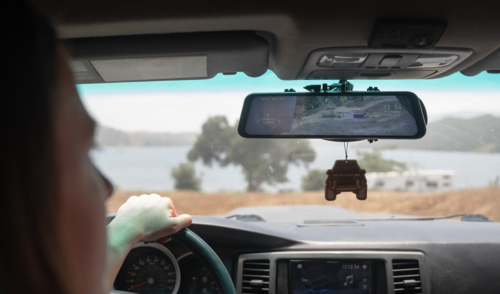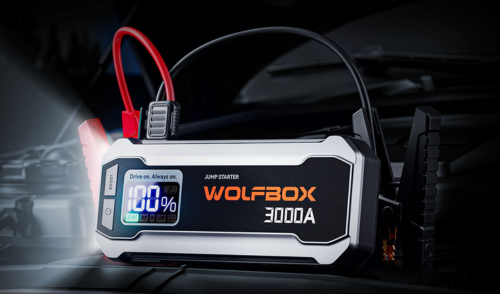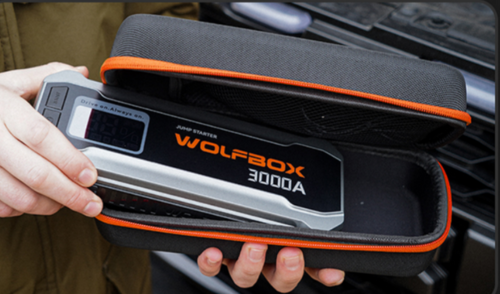Inside this Article:
- Why Do You Need Both Front and Rear Cameras?
- Key Features: What Makes a Rear Front Dash Cam Stand Out?
- How Can It Help Prevent Accidents?
- The Role of Dash Cams in Insurance Claims and Liability
- How to Choose the Right Rear Front Dash Cam
- Installation and Maintenance Tips
- Conclusion: The Necessity of a Rear Front Dash Cam
- FAQs
In today’s fast-paced world, road safety is a top priority for drivers. Whether you’re commuting to work or taking a road trip, being prepared for unforeseen events is crucial. One of the best ways to protect yourself on the road is by investing in a rear front dash cam . This dual-camera system records everything happening both in front and behind your vehicle, offering a full spectrum of protection. But why exactly is this tech essential for complete road safety?
Why Do You Need Both Front and Rear Cameras?
When most people think about dash cams, they often imagine a single camera facing the front. While front cameras are useful, they only capture a part of the story. Rear front dash cams ensure that nothing is missed, as they record both the road ahead and the traffic behind. This is critical for situations like rear-end collisions, which can happen unexpectedly.
Can a front camera alone provide enough coverage? No. A front camera may miss critical details like tailgaters or sudden rear-end impacts. A rear front dash cam eliminates these blind spots by capturing every angle, giving you comprehensive video evidence in the event of an accident.
Key Features: What Makes a Rear Front Dash Cam Stand Out?
One of the most significant advantages of a rear front dash cam is its ability to provide 360-degree monitoring. This full-coverage feature helps ensure that no matter where the incident occurs, it will be recorded. Additionally, high-resolution video capabilities allow for crystal-clear footage, which is essential for both insurance claims and personal review.
Did you know that many modern dash cams come with night vision?
This feature ensures that even in low-light conditions, such as driving at night or in poorly lit areas, your footage will still be clear. Paired with advanced image sensors, these dash cams excel in night-time recording, offering another layer of safety during night driving.
How Can It Help Prevent Accidents?
While it’s true that dash cams can't prevent accidents, they can significantly reduce the risk by encouraging safer driving. Knowing that both the front and rear of your car are being monitored might make you more aware of your surroundings and potential hazards.
Can a dash cam actually help you avoid accidents? While it may not prevent an accident directly, it can make you more alert to dangerous driving behaviors from other vehicles, such as sudden lane changes or aggressive tailgating.

The Role of Dash Cams in Insurance Claims and Liability
One of the most overlooked benefits of a rear front dash cam is its role in insurance claims. In the aftermath of an accident, having clear footage can make all the difference in determining fault and speeding up the claim process. In fact, many insurance companies now accept dash cam footage as reliable evidence.
Does having a rear front dash cam speed up insurance claims? Absolutely. If you’re ever involved in a crash, presenting a detailed recording of the incident can lead to faster and more accurate claim settlements, potentially saving you time and money.
How to Choose the Right Rear Front Dash Cam
When it comes to choosing the right dash cam, it’s essential to consider a few key features. Look for a camera that offers high-definition video (at least 1080p), ample storage capacity, and night vision capabilities. Additionally, make sure the dash cam supports features like automatic recording when the car starts and a built-in G-sensor to detect collisions.
What’s the difference between a high-end and a standard dash cam? Premium models often come with more advanced features, such as parking mode, which records even when the vehicle is parked, and larger storage options to ensure continuous recording without overwriting important footage.

Installation and Maintenance Tips
Installing a rear front dash cam is generally straightforward, but proper placement is crucial to ensure optimal performance. The front camera should be mounted high on the windshield, and the rear camera should be placed in a location that offers a clear, unobstructed view of the road behind.
Is it difficult to install a rear front dash cam? For most users, installation is a simple DIY process. However, professional installation may be beneficial if you want to ensure the wiring is done neatly and correctly.
Maintaining your dash cam is just as important. Regularly check the camera’s lenses for dirt and smudges, update the firmware to keep it running efficiently, and ensure the memory card has enough space for continuous recording.
Conclusion: The Necessity of a Rear Front Dash Cam
In conclusion, a rear front dash cam offers complete road safety by providing full coverage of both the front and rear of your vehicle. Its ability to record crucial moments in high definition, even in low-light conditions, makes it an essential tool for any driver. Whether you’re looking to protect yourself from fraudulent claims or ensure you have solid evidence in case of an accident, a rear front dash cam is a small investment for peace of mind on the road.
So, are you ready to upgrade your vehicle's safety and enjoy ultimate protection with a rear front dash cam? Don’t wait until it’s too late—equip your car with this invaluable device today.
FAQs
1. What is a rear front dash cam?
A rear front dash cam is a dual-camera system that records both the front and rear views of your vehicle simultaneously, offering complete coverage and enhanced safety while driving.
2. Do rear front dash cams work at night?
Yes, most rear front dash cams are equipped with night vision or enhanced low-light capabilities to ensure clear video footage even in dark or low-visibility conditions.
3. Can a rear front dash cam help in insurance claims?
Yes, having footage from both the front and rear cameras provides vital evidence for insurance claims, helping to determine fault and clarify events during an accident.
4. How is a rear front dash cam installed?
A rear front dash cam is typically mounted on the windshield for the front view, while the rear camera is placed on the rear window. Installation is usually straightforward with adhesive pads or suction mounts.
5. Do rear front dash cams record all the time?
Yes, most rear front dash cams record continuously and loop over older footage, automatically saving any video segments triggered by incidents such as collisions or sudden braking.






Leave a comment
This site is protected by hCaptcha and the hCaptcha Privacy Policy and Terms of Service apply.